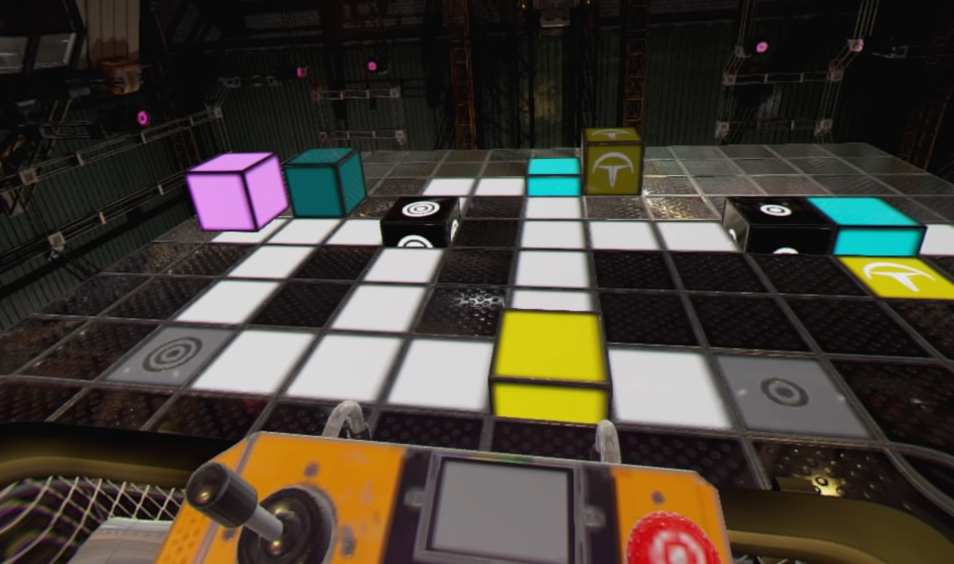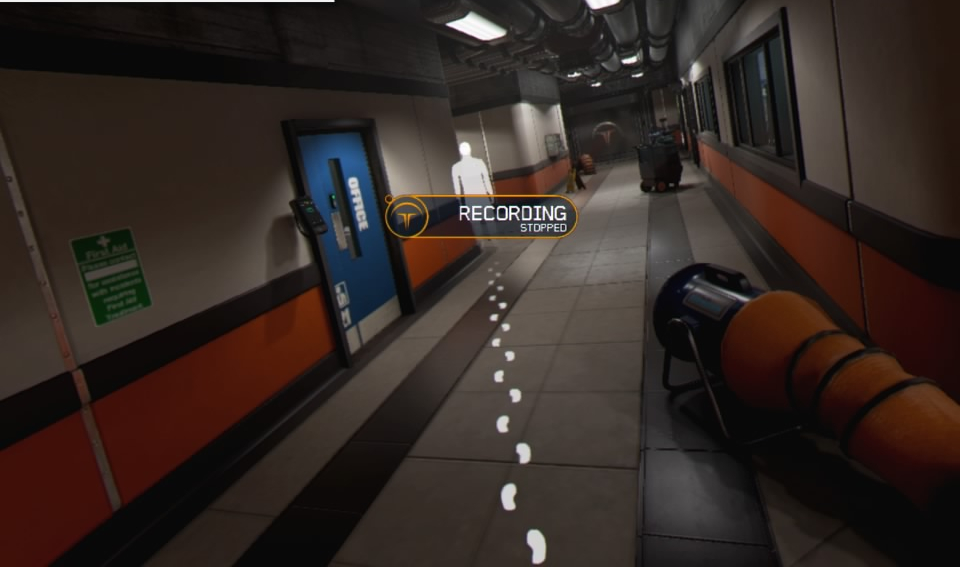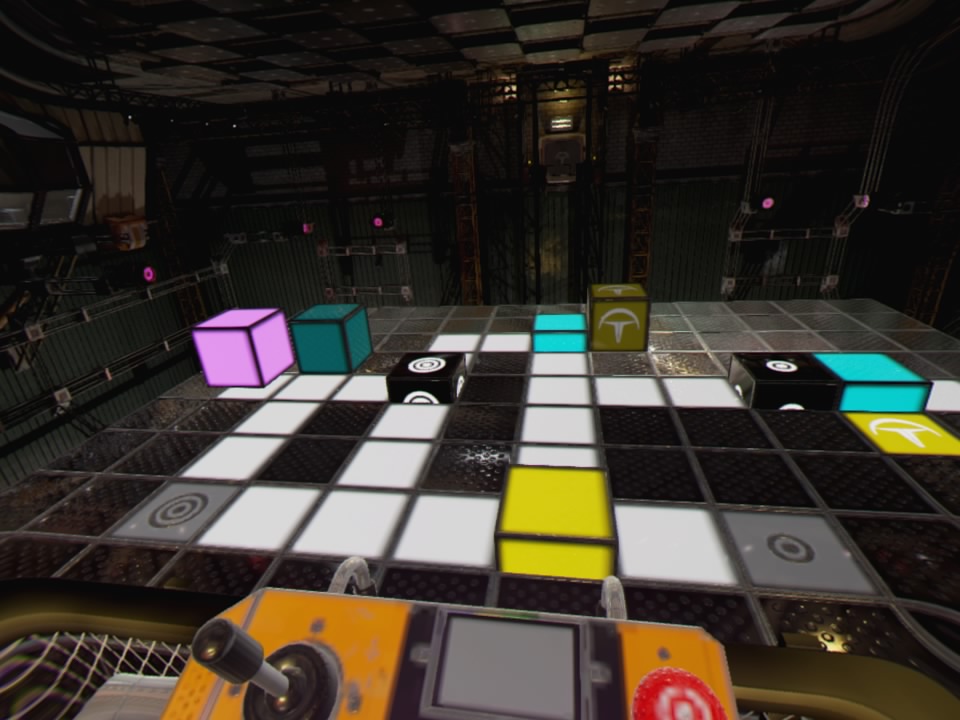
The PlayStation VR is the future of gaming. THERE! I said it. It has created new worlds and experiences that were never before possible in an interactive medium. That said, most of the virtual reality titles available at the launch of Sony’s new headset have possessed rather truncated runtimes. This is why it was interesting when developer nDreams decided to swim against the proverbial tide and port their summer VR release, The Assembly to PSVR. So how does a meaty four-hour campaign play out in the literal first person? Let’s just say that the phrase, “be careful what you wish for,” comes to mind rather prominently.
Multiple Personality Disorder
Virtual reality is a platform that lends itself well to the embodiment a single character. The Assembly actually shuns this widely accepted notion and instead puts the player in control of two completely different characters over the course of the campaign. On one side of the coin is Caleb Pearson, a longtime member of The Assembly’s research staff, looking for his way out of the organization’s inner circle. On the opposite side of the storyline is Madeleine Stone, a widely respected scientist that has taken a rather remarkable fall from grace. Her rapid descent has landed her in the recruiting sights of the same shadowy organization that Caleb is so desperately trying to escape.
The juxtaposition of two scientists, both with completely different motivations and trajectories, ends up resulting in an interestingly constructed narrative. Madeleine spends the majority of her time working through a series of different puzzles, with varying levels of difficulty. While no single task seems overwhelmingly difficult, it is worth mentioning that the many different ways the organization tests the mental faculties of their staff helps keep her segments fresh. Small chunks of backstory are revealed upon successfully completing challenges, via a steadily predictable drip feed of cut-scene set-pieces. Unfortunately, the time spent in her shoes feels drastically limited, especially given that she has the more interesting side of the plot.
When playing as Caleb, the main focus revolves around uncovering how The Assembly is using one of his previous creations for nefarious means. Despite the fact that he had abandoned this projects several years back, the institute seems to have re-ignited the research without his consultation, which raises far more questions than it answers. He ends up deciding to spend his time sneaking around the facility, slowing gathering evidence as to what they are up to. This is all done while also evading the ever-watchful eye of “Big Brother.” Be ready to be treated to plenty of self-indulgent narration, as this seems to be the only way that the player is provided with direction. I remember being told at some point in my childhood that speaking to yourself is the first sign of insanity. If this is truly the case, the sheer volume of Pearson’s internal dialog would indicate that a padded cell and finely blended meals are in his immediate future.
[imagebrowser id=4041]
Frayed Plotlines
Though common sense would dictate that Caleb and Madeleine’s storylines should eventually intersect in some fantastical manner, this is hardly the case. They do have a brief moment of cross-over, but for the vast majority of the campaign, both characters remain blissfully ignorant of each other. This is a significant missed opportunity, especially when you consider that both plots offer up plenty of chances for interaction. Furthermore, as soon as players have the chance to finally become invested in either of the characters, the plot comes to a very abrupt and unsettled conclusion. It almost feels like any sense of building towards a climax is quickly thrown out the window in favor of cutting bait and rushing towards the credits.
The entire way in which The Assembly utilizes VR technology is even more disheartening. This should be an opportunity to redefine the way that stories have been traditionally told. Unfortunately, this is an experience that falls so far short of revolutionary, that it is barely evolutionary. Nothing is attempted throughout the entirety of the campaign that couldn’t have been accomplished using traditional, two-dimensional presentation. Even more damning is the notion that there are many segments that would have been far more approachable if the game had used 2D.

Navigating each stage is where the lack of evolution is most readily apparent. Instead of the traditional twin stick FPS control scheme, players are instead treated to a series of slight rotational nudges that are assigned to each stick. Smooth camera scrolling is replaced by holding down a shoulder button to enable the use of a ghost apparition, which can be placed within a limited radius of the player’s current placement. Upon selecting an indicated location, the character is then relocated to that spot. Mind you, this is all done with little indication as to what direction the camera will be facing when navigation is complete. This leads to a continuous cycle of movement, disorientation, and rotation. It is hard to say if this is a byproduct of attempting to curb potential motion sickness, but it still feels like there should be far more effective ways to traverse the world’s map.
Whenever new technology is introduced, it usually takes a fair amount of time before developers grow accustomed to the capabilities and nuances of the hardware. Not everything is a hit right out of the gate, and The Assembly is no exception to that rule. Despite providing an interesting showcase for the equipment, it is blatantly devoid of anything that’s unique to virtual reality as a platform. Even in two dimensions, this is a title that would be hard to recommend due its mediocre story and bland puzzles. Hypothetically speaking, if this were an experiment being conducted by an underground research organization, trying to determine the validity of PlayStation VR as a platform, it would be deemed rather dramatically inconclusive.
Review code for The Assembly provided by publisher. Reviewed on PlayStation 4. For more information on scoring, please read our Review Policy here.
-
A substantial four hour narrative
-
Though relatively unchallenging, the puzzles are still fun to solve
-
The storyline is rather dull and lacks any sense of climax
-
Neither character is given enough screen time to endear themselves to players
-
The game doesn't do anything special with the VR technology




